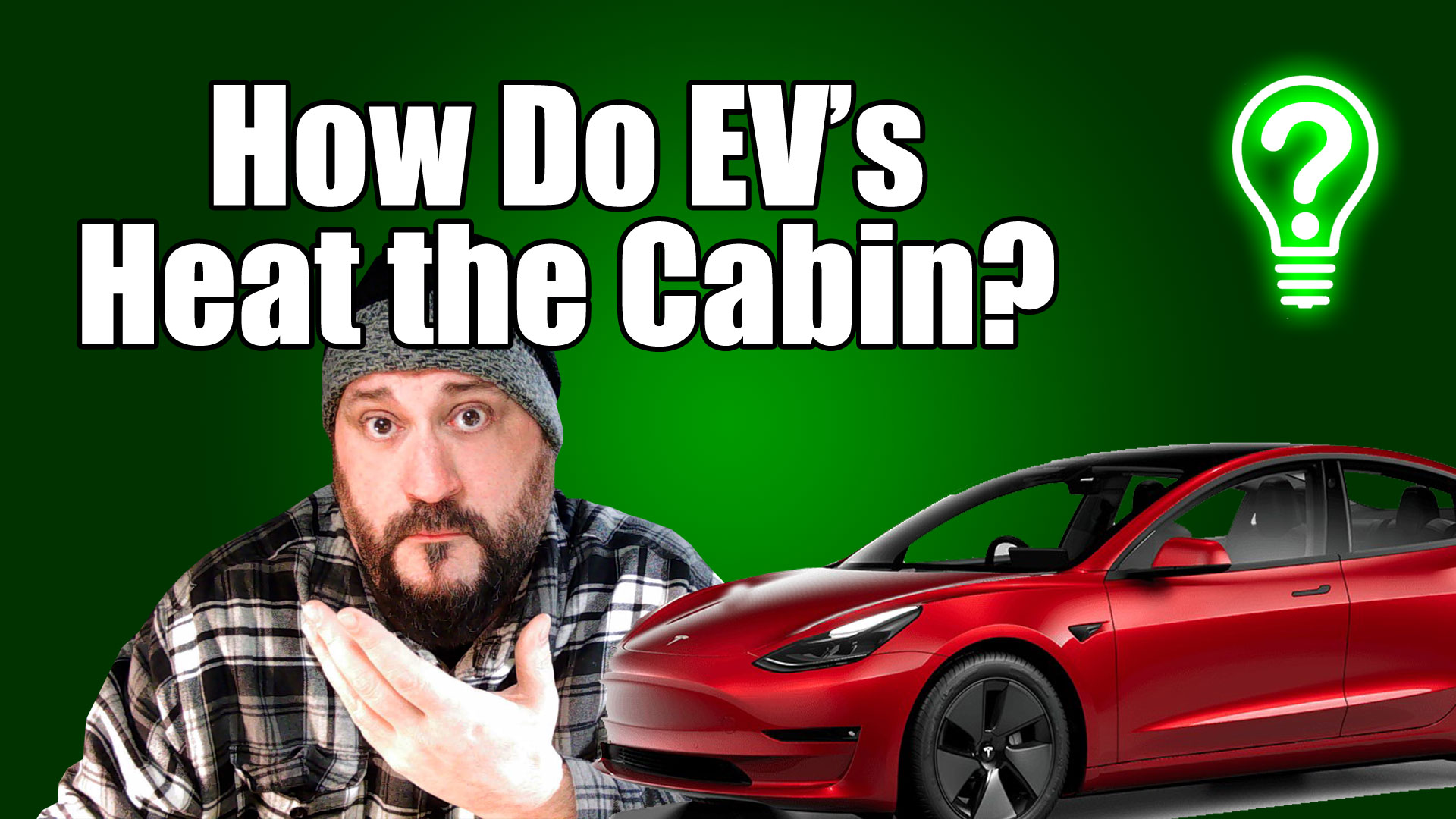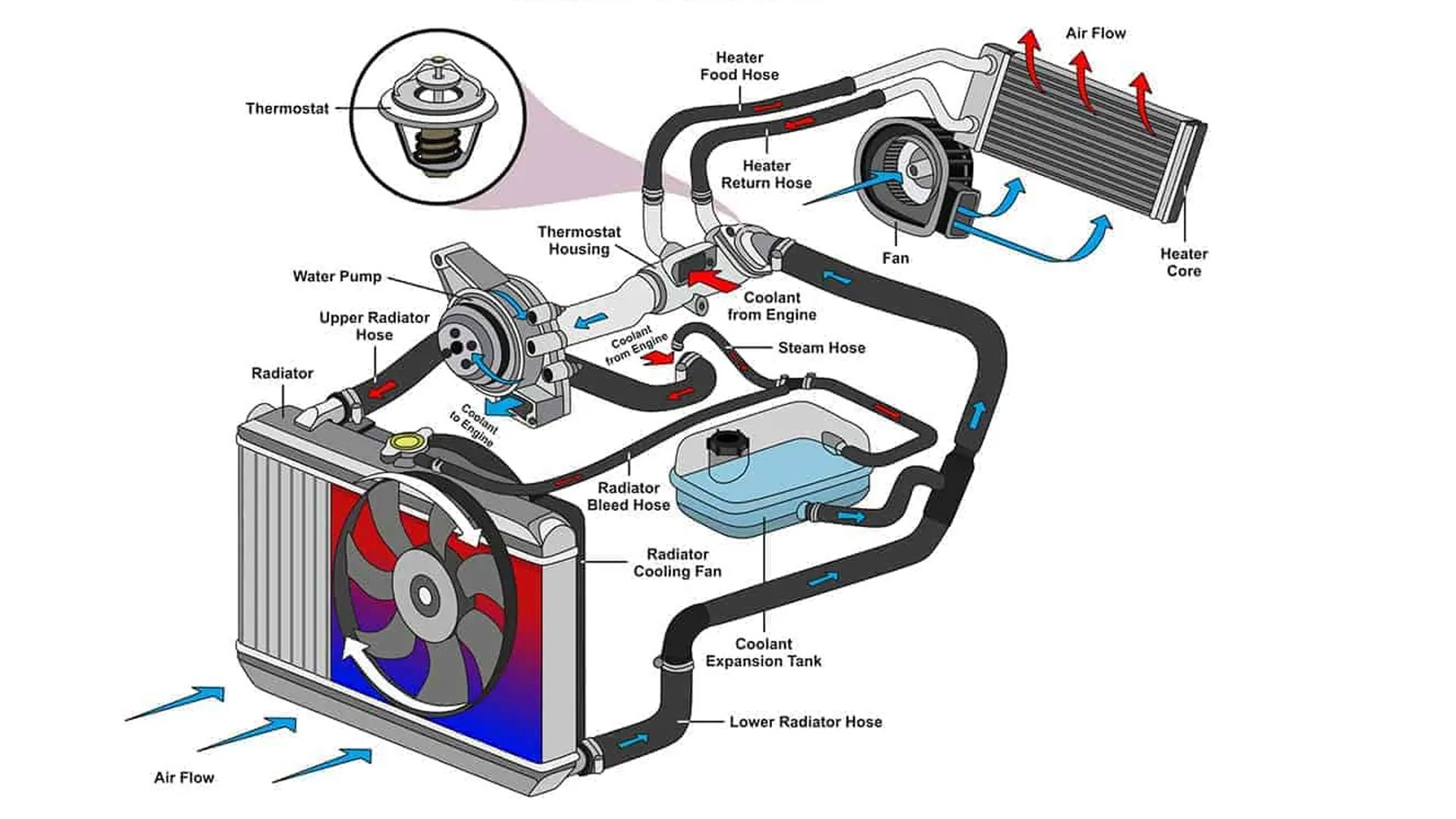
How Do Electric Vehicles Heat the Cabin? – Learn Stuff
At time time I am writing this, my area has a -20°F wind chill advisory for tomorrow and a 12″ snowfall warning for the next day (-29°C and 30cm). This makes me wonder: “how do all these EV’s heat themselves without an internal combustion engine?”. I am quite familiar with auto mechanics and suppose have always taken for granted that a traditional engine generates heat by design. All you have to do is transfer that heat to the cabin to keep yourself nice and toasty. The answer is actually a lot more simple than I thought, so let’s take a look at how electric vehicles keep you from freezing while driving them.
First, let’s go over how the heating system of a vehicle with an internal combustion engine works. The powerplant literally runs on small explosions, which generate quite a bit of heat. The first problem to overcome is the engine getting too hot. This is remedied by pumping liquid coolant (yes, I know there are also air-cooled versions) through the engine and circulating it through a radiator, which dissipates that heat to the atmosphere. Heating the cabin is accomplished in the same way. A smaller radiator, called a heater core, is located behind that dash. Air is warmed by blowing it through the heater core and into the cabin via vents and/or the defroster.
Ok, that’s simple enough, but EV’s don’t have an engine to draw heat from. I tried to guess the answer before I looked it up. Are there grids in the floor pan that work like radiant heating in a house? Did Tesla come up with some kind of magical system that heats the body of the car? I don’t know, I don’t own an EV.
Obviously, the power source for an EV is it’s massive battery pack, so the energy to create heat has to come from there. But how do they do it? It turns out that an EV’s heating system is pretty much the same as a traditional one, even liquid coolant. The main difference is that there is no engine, so electricity is used to heat the coolant before it goes to the heater core. Think of your home’s water heater – same kind of thing. Some EV’s use a heat pump, which would draw heat from the atmosphere, but I can’t imagine that works when the outside air is cold. As it turns out, the electric motors on an EV also generate heat and need to be cooled, just like a combustion engine. I hadn’t considered that, though it’s obvious now that I think about it. Cold is the enemy of batteries, so the battery compartments need heat which can also be used in the cabin. Let’s not forget that even vehicles with combustion engines have electrically heated seats.
Long story short: EV heating systems are very similar to the kind with which I am familiar. I just couldn’t get my head around not having engine heat to utilize. Many EV’s have a feature which keeps them at a certain temperature while charging, “pre-heating” if you will. So good news, EV drivers don’t have to worry about freezing to death as I had feared.

































 GO PA!
GO PA! Learn Stuff
Learn Stuff Video
Video shop.kellyplanet.com
shop.kellyplanet.com


 Contact erickelly
Contact erickelly

Leave a Reply
You must be logged in to post a comment.